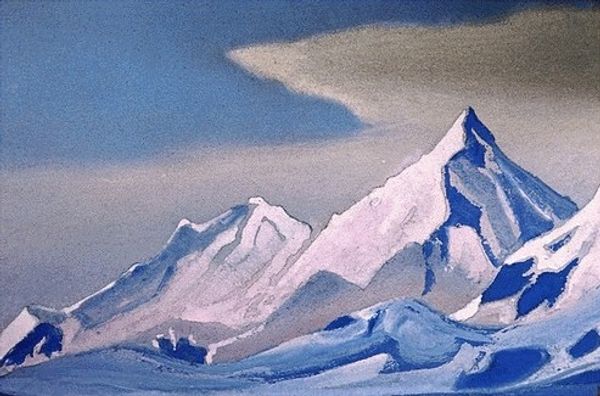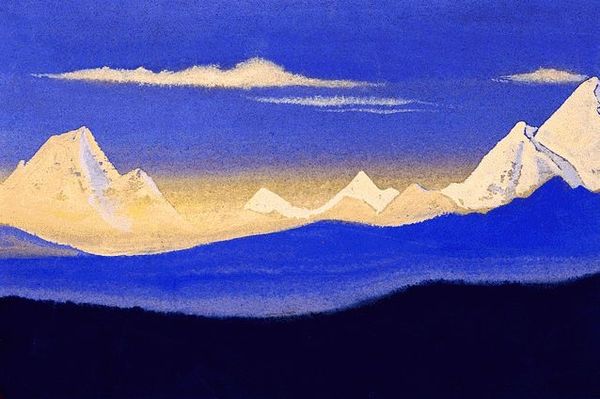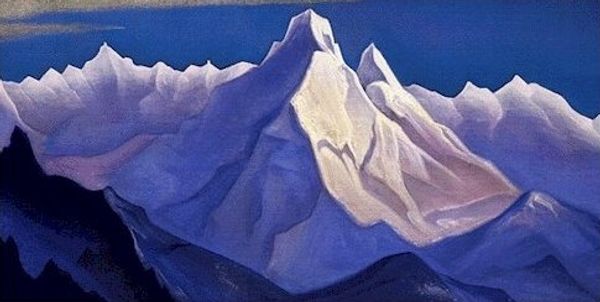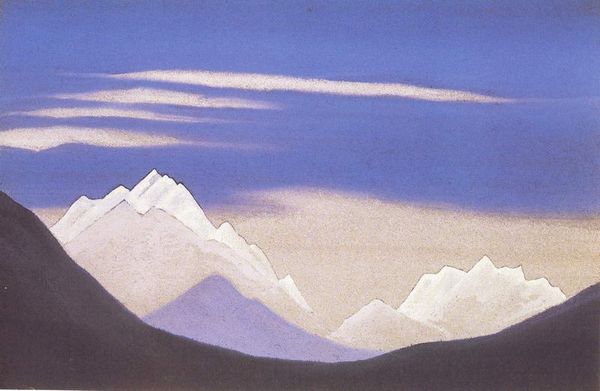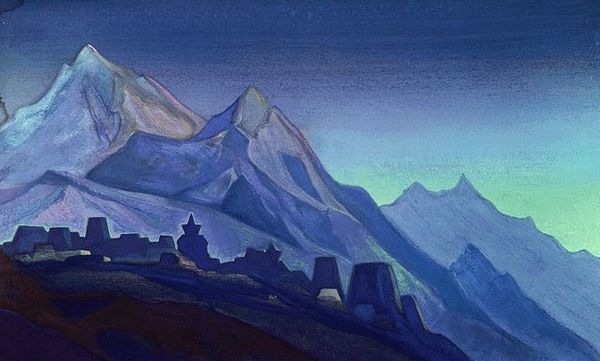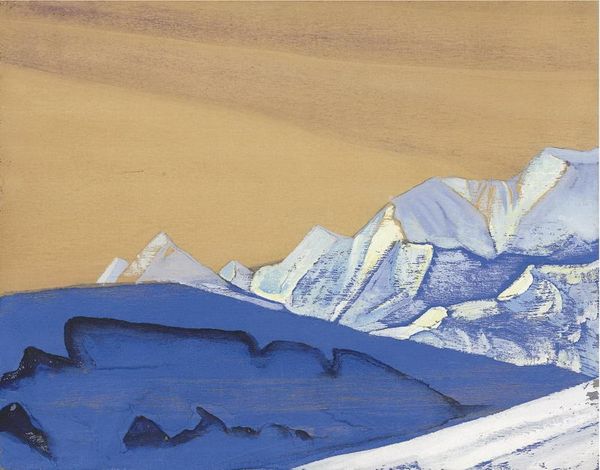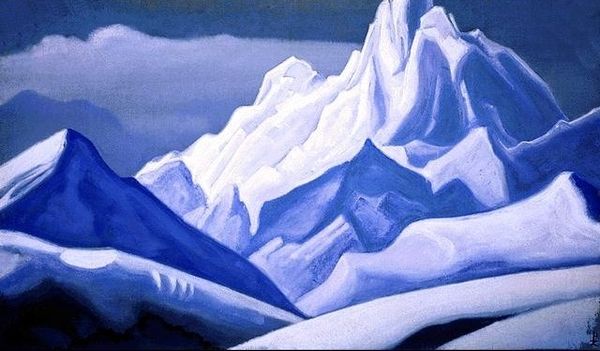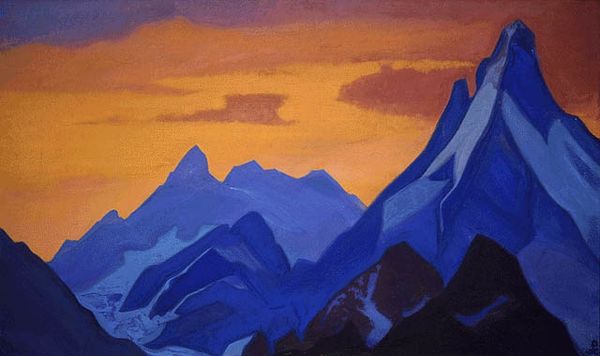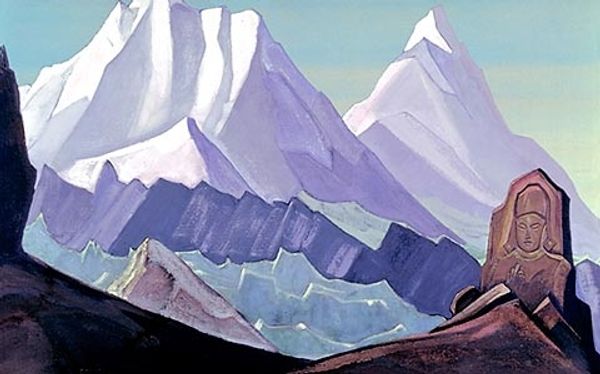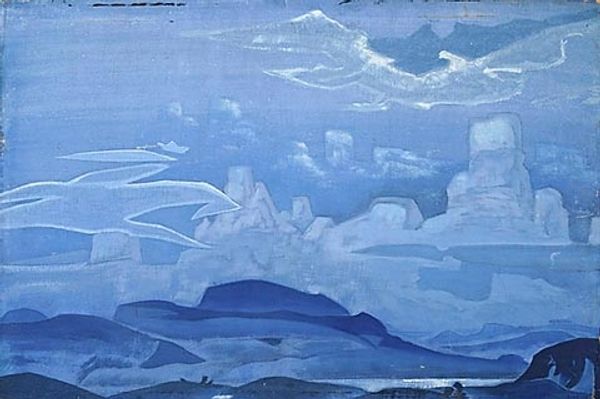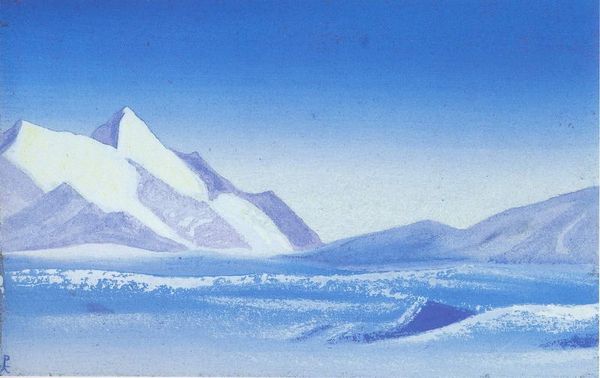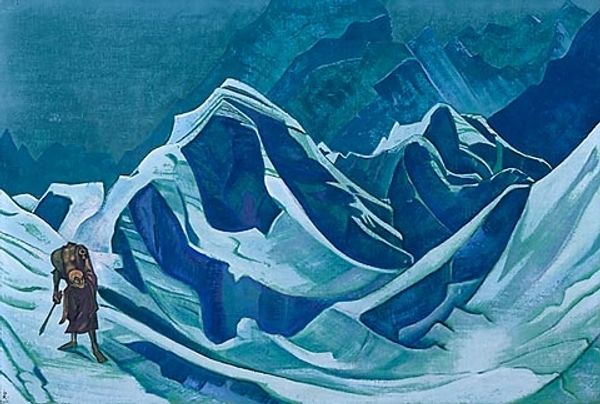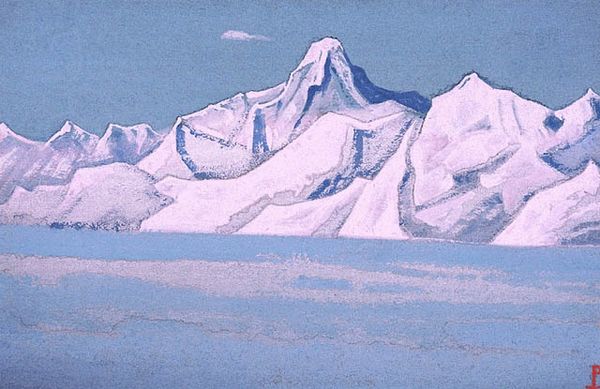
Copyright: Public domain
Curator: Here we have Nicholas Roerich’s “Himalayas. Everest.” painted in 1938. The medium appears to be tempera or oil paint on canvas. What strikes you first about it? Editor: Well, visually it's striking! The bold blues and whites, and the way the mountains seem to almost glow. There's a stillness, but also an almost unnerving otherworldly feeling about it. The mountains seem so stark and immutable. It's almost like witnessing the earth's ancient bones laid bare. Curator: Roerich's paintings of the Himalayas, like this one, were infused with spiritual significance. He saw the mountains as powerful symbols of enlightenment and connection to higher consciousness. Note how he uses a limited color palette and simplified forms to evoke a sense of timelessness. Editor: I see that too. Considering its historical context, painted on the eve of World War II, do you think that Roerich’s rendering attempts to remove us from earthly concerns, towards a more elevated spiritual or even universal position? It also raises the issue of access: who gets to have these spiritual experiences or encounter with landscapes as an experience for a cultural elite? Curator: It’s possible, but remember Roerich was deeply influenced by Theosophy. His landscapes can be read as symbolic representations of spiritual planes, places for meditation and accessing divine wisdom through inner contemplation of oneself and the environment. Editor: Perhaps, though, his interpretation perpetuates a certain romanticized, even colonial, view of the region, extracting its image from the lived realities of the people who actually inhabit those mountains, particularly through art and political projects of his time. Whose spirituality are we talking about? Curator: That's a fair point. Though his works remain enduring as explorations of color, form, and feeling, and they echo similar concerns that were felt by the Symbolists a generation or two earlier. He transforms a geographical place into an iconographic space. Editor: And with such intense, unearthly blues and stark, sharp whites! Roerich uses the symbolic mountain as more than a physical place—he transports us, but, importantly, we should interrogate the ethics involved in such transportation. It's a captivating artwork that reminds us that our interpretations of images change over time, informed by who we are, what we know, and, most importantly, from where we speak. Curator: A provocative reminder, as the most profound images remain layered in significance, speaking across generations in a multitude of ways.
Comments
No comments
Be the first to comment and join the conversation on the ultimate creative platform.
